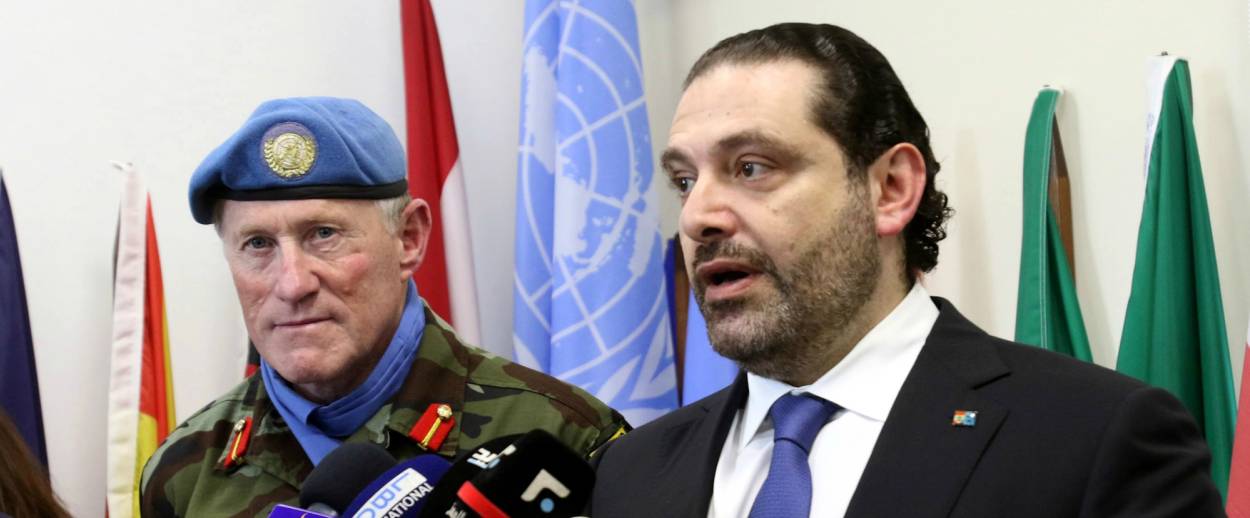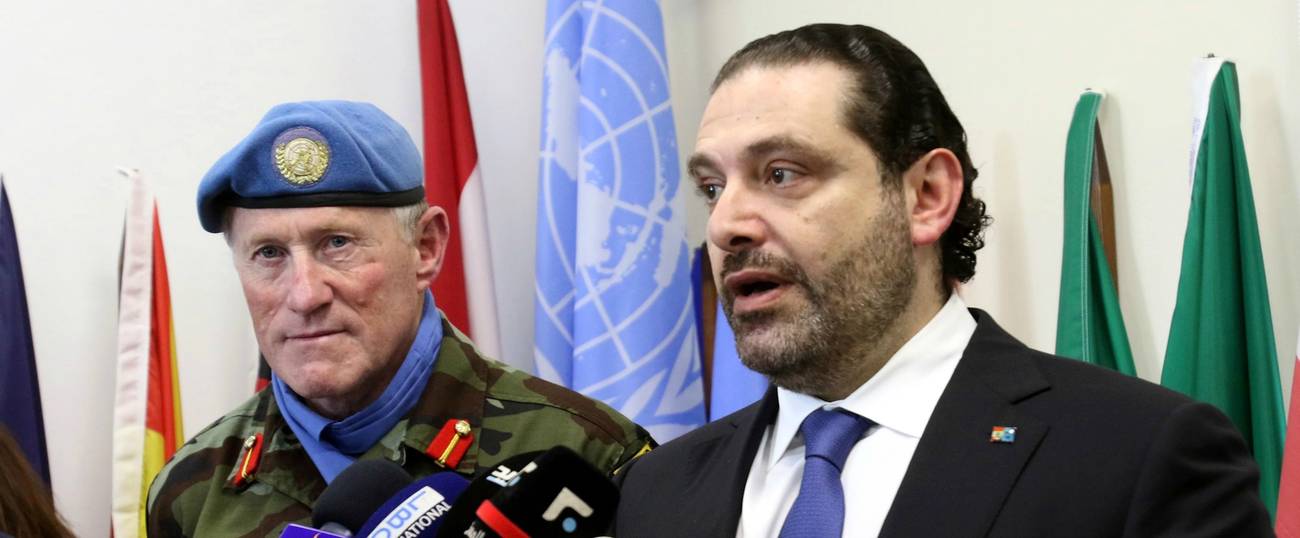Hezbollah’s Farcical Media Tour at the Israel-Lebanon Border
Make no mistake: the Iranian proxy controls the Lebanese state, including the U.S.-aided Lebanese Armed Forces




Last Thursday, Hezbollah organized a tour for journalists along the border with Israel, where the Iranian proxy highlighted the various topographical alterations the IDF has done near the border in preparation for a future war. As part of this event, Hezbollah fighters posed for pictures in the area carrying arms, including a man-portable air-defense system—an overt violation of UN Security Council resolution 1701. The resolution, passed in 2006 to conclude the Second Lebanon war, stipulates that the area between the Blue Line and the Litani river should be free of “any armed personnel, assets and weapons other than those of the Government of Lebanon and of UNIFIL (United Nations Interim Force in Lebanon).” To be sure, Hezbollah has been violating that resolution for a decade, but what makes this latest episode all the more egregious is that the Hezbollah tour was chaperoned by the Lebanese Armed Forces (LAF) and in the presence of UNIFIL forces in the area. Afterwards, Hezbollah clarified that its tour was “coordinated” with the LAF and UNIFIL. The latter subsequently issued a statement clarifying that the LAF gave it notice of the event “shortly before the media delegation arrived.” In other words, the LAF and Hezbollah were both in on the joke and UNIFIL, at best, was the butt of it.
So far, the focus has been on Hezbollah’s presentation of its impact on Israel’s military doctrine and on the possibility of another war breaking out. A Hezbollah officer who participated in the tour explained to the reporters how Israel’s engineering works and alterations of the landscape reflect its fear that Hezbollah would go on the offense in a future war and assault northern Israel. “For the first time,” the officer said, Israel was “switching from a offensive to a defensive doctrine.”
But, all that aside, what was the purpose of this exercise?
Sure, one could note that this was Hezbollah messaging to its base that for all the talk to the contrary, the group is in a state of readiness in southern Lebanon; that Israel is actually on the defensive; and that there is no prospect of a new war anytime soon (and that even if such an event were to happen, it’s prepared for it). However, all of that could’ve been achieved without so overtly and deliberately emphasizing that UNSCR 1701 is a farce—and that both the LAF and UNIFIL understand this and recognize that Hezbollah is the real authority in Lebanon, and that the LAP, if not also UNIFIL, is likely in collusion with it.
The answer, therefore, lies elsewhere. The message is specifically about the power dynamic in Lebanon and about European—as well as American—acquiescence to this dynamic. In so doing, Hezbollah quite plainly laid out for all to see its position at the head of the table, while also assigning the task of the “Lebanese government” in its interaction with the U.S. and international players. Read in this light, it becomes easier to understand the timing of the tour. It occurred while a delegation of Lebanese parliamentarians and officials were in Washington, where it held meetings at the World Bank and the International Monetary Fund, but also on Capitol Hill and with U.S. officials. The Lebanese delegation’s goal was to plead against harsher sanctions and to rattle the can for more aid to Lebanon.
When the new Hezbollah-allied Lebanese president Michel Aoun stated earlier in the year that Hezbollah’s weapons “are not in contradiction with the state,” there was a concern that such comments would negatively impact aid to the LAF and Lebanon. Then Aoun’s son-in-law, foreign minister Gebran Bassil, was invited to Washington to participate in the conference of the anti-ISIS coalition. At a talk at the Wilson Center, Bassil doubled down on the pro-Hezbollah message: “There is consensus in Lebanon on the role of the Resistance and Hezbollah in fighting the Israeli enemy and defending Lebanon,” he said.
Upon returning to Lebanon, a pro-Hezbollah journalist praised Bassil for maintaining this position in all his meetings, and then put forward Hezbollah’s point: There should be no concern about adopting this public posture. And since the U.S. “realizes the importance of the LAF’s role in fighting jihadist groups, there is no worry about the fate of [U.S.] military aid.”
In the same vein, it was also notable that two days before the Hezbollah tour, the landing in northeastern Lebanon of a U.S. military plane carrying aid to the LAF was highly publicized. This was a first, and the military air field where the cargo plane landed is in Hezbollah territory in the Bekaa. The optics of the delivery and the coverage in the Lebanese media underscored the aforementioned Hezbollah message—that the U.S. priority is fighting Sunni groups, while winking at the reality of LAF-Hezbollah synergy.
This, in short, is the Obama legacy. President Obama openly recognized Syria and Lebanon as Iranian spheres, and used the anti-ISIS campaign to cement this recognition and the broader realignment with Iran. The cover was to partner with Iran-dominated “state institutions” in places like Iraq and Lebanon.
Hezbollah makes use of this same facade. On the one hand, it has ministers and bureaucrats running interference in Washington. At the same time, its supposed domestic opponents come out and emphasize that this is not the position of the government (of which Hezbollah and its allies own the lion’s share), even as the LAF chaperoned the whole thing. Which is exactly what Lebanese Prime Minister Saad Hariri did.
Following the Hezbollah tour, Hariri paid a visit to UNIFIL headquarters, accompanied by the Hezbollah-allied defense minister and LAF commander, where, for added comedic effect, he reaffirmed his “government’s commitment, with all its components” to UNSCR 1701. That is to say, Hariri was mopping up after Hezbollah—a “component” of the government, which had just violated 1701, in collusion with the LAF. Never mind that. “The government is not interested in, nor does it accept, what happened,” Hariri said. And so, the “government” both violates and is committed to UNSCR 1701. Everyone, really, is committed to the charade.
Hezbollah knows full well that the U.S. and Europe are eager to seize on this fig leaf—a Hezbollah-controlled set-up—in order to maintain the status quo. Hezbollah has dropped all pretenses and laid bare the joke that is UNSCR 1701 and the “Lebanese government.” And the joke is on the United States if it continues with a policy the foundation of which is not only a complete farce, but one which the previous administration deliberately conceived as part of its pro-Iran regional strategy.
Tony Badran is Tablet’s news editor and Levant analyst.